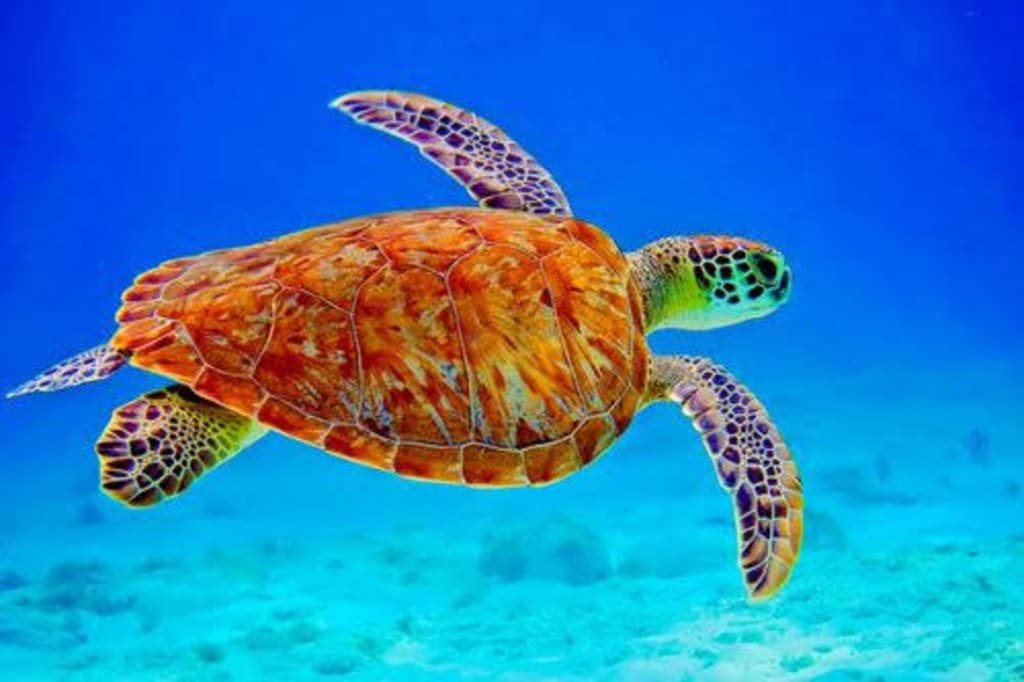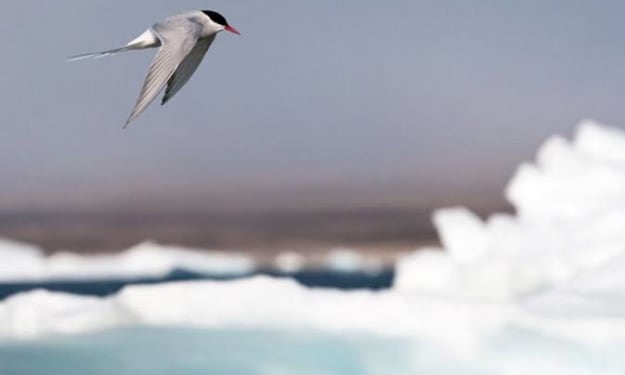Tracking the Mysterious Migration of Sea Turtles
Understanding The Movement Of Sea Turtles

Sea turtles are fascinating creatures that travel long distances across the oceans.
Their migration is one of nature's great mysteries. Scientists have been working hard to understand these incredible journeys and how sea turtles navigate such vast distances.
What is Sea Turtle Migration?
Migration is the large-scale movement of animals from one place to another.
For sea turtles, this often means traveling thousands of miles between their feeding grounds and nesting beaches.
Sea turtles usually migrate to find food, reproduce, and lay eggs.
Types of Sea Turtles
There are seven species of sea turtles, and each has its own migration patterns. Some of the most well-known species include:
1. Loggerhead Turtle: Known for their large heads and powerful jaws, Loggerhead Turtles migrate from feeding grounds in coastal waters to nesting beaches, often traveling thousands of miles.
2. Green Turtle: Named for the green color of their body fat, Green Turtles migrate between feeding areas in seagrass beds and nesting beaches on tropical and subtropical shores.
3. Leatherback Turtle: The largest of all sea turtles, Leatherbacks are known for their long migrations from cold waters where they feed on jellyfish to warmer nesting beaches.
4. Hawksbill Turtle: Recognized by their pointed beaks and beautiful shells, Hawksbills travel from coral reefs where they feed to nesting beaches, often in tropical regions.
Why Do Sea Turtles Migrate?
Sea turtles migrate for several reasons:
1. Feeding: They travel to areas rich in food, such as jellyfish, seaweed, and other marine life. Different species have different dietary preferences that dictate their migratory routes.
2. Nesting: Female turtles return to the beaches where they were born to lay their eggs. This remarkable homing ability ensures that they come back to the same location, often after traveling thousands of miles.
3. Climate: They move to warmer waters during colder seasons to maintain their body temperature. Warm waters are crucial for their survival, as sea turtles are cold-blooded and rely on external temperatures to regulate their body heat.
How Do Scientists Track Sea Turtles?
Scientists use several methods to track sea turtles:
1. Satellite Tags: These small devices are attached to the turtle's shell. They send signals to satellites, allowing scientists to track the turtle’s location in real-time. This technology provides detailed data on the turtles' routes and behaviors.
2. Flipper Tags: These are small metal or plastic tags clipped to the turtle's flippers. When a tagged turtle is spotted again, scientists can record its location. This method has been used for decades to gather data on turtle movements.
3. GPS Technology: Some turtles are equipped with GPS devices that provide precise information about their movements. GPS tracking helps scientists understand the specific routes turtles take and the environmental conditions they encounter.
Discoveries from Tracking
Tracking sea turtles has revealed many amazing facts:
Long Distances: Some turtles travel over 10,000 miles in a single migration. This is one of the longest migration distances of any marine animal.
Navigational Skills: Turtles use the Earth's magnetic field to navigate. They can find their way back to the exact beach where they were born, even after many years. This ability, known as natal homing, is still a subject of ongoing research.
Critical Habitats: Scientists have identified important feeding and nesting areas that need protection. These habitats are crucial for the survival of sea turtle populations and require conservation efforts.
Challenges Faced by Sea Turtles
Sea turtles face many threats during their migrations:
Pollution: Plastic waste and oil spills can harm turtles and their habitats. Ingesting plastic can be fatal for turtles, and oil spills can damage their nesting sites and feeding grounds.
Fishing Nets: Turtles can get accidentally caught in fishing nets, which can be deadly. Bycatch, or the unintentional capture of non-target species, is a significant threat to sea turtle populations.
Climate Change: Rising sea levels and warmer temperatures affect nesting beaches and the availability of food. Climate change can lead to habitat loss and altered food webs, impacting the survival of sea turtles.
How You Can Help
There are several ways you can help protect sea turtles:
Reduce Plastic Use: Cut down on plastic to prevent it from ending up in the ocean. Use reusable bags, bottles, and straws to reduce plastic waste.
Support Conservation Efforts: Donate to or volunteer with organizations that protect sea turtles. Many groups work on the ground to safeguard nesting sites and reduce bycatch.
Be a Responsible Tourist: If visiting beaches where turtles nest, follow guidelines to avoid disturbing them. Keep a safe distance from nesting turtles and their hatchlings, and avoid using bright lights that can disorient them.
Conclusion
The migration of sea turtles is a remarkable natural phenomenon.
By tracking their movements, scientists are learning more about these ancient mariners and the challenges they face.
Protecting sea turtles and their habitats is crucial for ensuring that these magnificent creatures continue to thrive for generations to come.
Every effort counts in preserving the delicate balance of our marine ecosystems and ensuring the survival of sea turtles.
About the Creator
Dibio Augustine
Professional Animal behavior writer. ❤️
Learn more about your favorite animal/pet behavior here 📚
Come with your dictionary 🥴






Comments
There are no comments for this story
Be the first to respond and start the conversation.